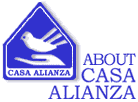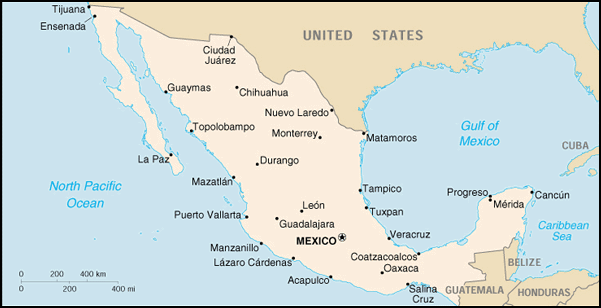URBANIZATION, POVERTY, AND CHILDREN IN LATIN AMERICA
Mexico: Case Studies
Riho Sakurai

Program: Casa Alianza (Alliance House)
Location: New York based covenant house. The branches are located in Guatemala, Honduras, Mexico and Nicaragua.
Sponsorship of program: New York Covenant House, whose president is Sister Mary Rose Mc Geady D.C. The executive director of Latin America is Bruce Harris.
History /background of program: Casa Alianza is a non-profit organization dedicated to the rehabilitation and defense of street children. Founded in Guatemala in 1981, it was expanded into Honduras and Mexico in 1986 and into Nicaragua in 1998. Thanks to Luis Creel, a lawyer with international prestige, who was concerned for the plight of street children, Casa Alianza Mexico was established. It became incorporated as a Mexican agency in 1988 and started working with street children (males) in 1989. In 1991, the first home for street children (males) was opened. In 1992, the family integration program was developed. In 1993, with government support, two more group homes were started to operate. In July 1996, Sister Mary Rose inaugurated a new, 110 bed Crisis center in the center of Mexico City. Besides the crisis center, the new building also housed a drug rehabilitation program; a residential program for AIDS victims; and family reintegration and a medical clinic.
Approximate # of children served: In total, the program helped about 1,000 children a year.
Characteristics of the children served: Street children, who have been orphaned by civil war, abused or rejected by dysfunctional and poor families.
How children are recruited/selected: Casa Alianza reaches out to the children on the streets; in parks; in darkened hallways; around garbage dumps and bus terminals.
Program Services: Casa Alianza's program consists of four phases: Street Outreach, Crisis Center, Transition Homes, and Group Homes. Outreach teams provide street children with emergency medical care, counseling, non-formal education, and friendship. The children are encouraged to leave the street and seek further assistance at Crisis Center. Crisis Center provides the children with a structured and supportive environment. They are fed, clothed, given a clean bed, diagnostic and medical treatment, educational or vocational training, security, and love and hope. At next stage, Transition Homes, staff members help the children develop long-range goals for an independent and productive life. Young children are enrolled in public schools; older adolescents are offered vocational training. The last step is self-sufficiency, which involves residency in a Group Homes where children are nurtured by carefully chosen teams of counselors who try to replicate a positive family environment. Children can be stayed at Casa Alianza until they become18 years old or they have completed their education.
Financial basis of program: (Not specifically shown in the web page). National and International donation. Budget expenses for the year 1998-99 was 13,605,000 Mexican pesos, or about US$ 1,133,750.
Philosophy or approach: Five basic philosophy includes: Immediacy without questions and no other requirements but the child's acceptance, Sanctuary, or unconditional respect for the children's intimacy, Value Communication, Structure (offering a regular schedule that gives children the stability they need), and Choice (children take the decisions). Basic approach is "street is not an adequate place for adolescent children, therefore, the focus must be an invitation for them to abandon it". The axle of Casa Alianza is two ideas. "Covenant (alliance)" and "home". Alliance should be understood as a special relationship, developed with the child based on unconditional love, absolute respect and honesty. House should be understood as a space different from the street, where one can live, play, develop spiritually and formatively with a school, or reunite family ties.
Special features: Olof Palme Prize was
given to Casa Alianza in 1996 as recognition for its work and dedication in
helping the street children in Mexico. International Internet award was offered
in 2000.
Appendix -Street Children in Mexico City-
II Censo Ninos y Ninas en Situacion de Calle -Ciudad de Mexico-1996, UNICEF.
-The number of street children in Mexico City: 1,850 (1995)
-Sex: male 1,573 or 85%; female 277 or 15%
-Age: 14 to 17 years old 964; 6 to 13 years old 759; 0 to 5 years old 127.
-Education: 88.1 % of the children of the street know how to read and how to write.
-Activities: Indigenous street children - begging
(76.19%), selling products (4.76%)
No indigenous street children- begging (25.92%) wiping
car windows (20.12%),
Selling products (10.06%), buffoonery (2.52%).
-Children of the street: 13.84%
-Number of the food: 1 time a day 6.44%, 2 times
a day 44.75%, and three times a day 45.08%.
